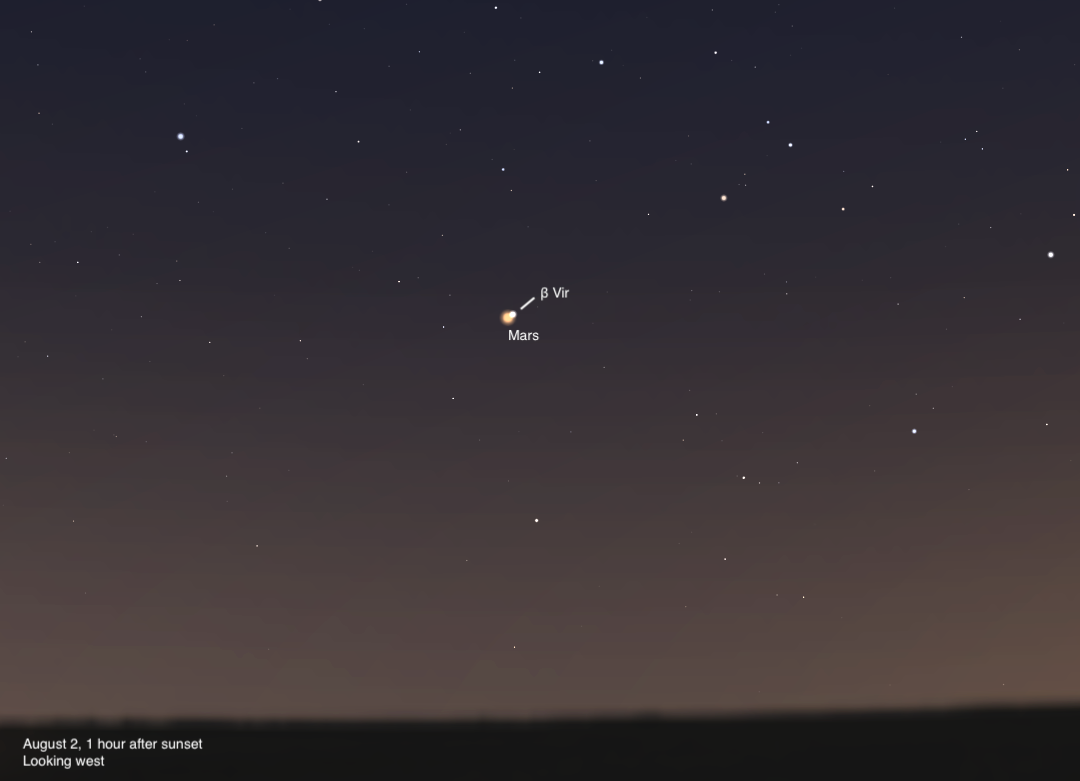Look west after sunset to spot the Red Planet forming a wide double with Virgo’s 4th-magnitude beta star, Zavijava.
Mars passes close to Beta Virginis in the evening sky on August 2. Credit: Stellarium
- Mars is currently visible in the western sky after sunset, at its faintest apparent magnitude (1.6) for the year, due to its approaching solar conjunction.
- On this particular night, Mars is situated approximately 8 arcminutes southeast of Beta Virginis (Zavijava), offering a close visual pairing observable with binoculars or a telescope.
- The distance to Mars is approximately 197 million miles, contrasting with Zavijava’s distance of 36 light-years.
- Zavijava, described as a Sun-like star, possesses roughly 25% more mass, is slightly less than twice the width, and exhibits about 3.5 times the brightness of our Sun.
Mars is now moving through Virgo, sitting low in the western sky after sunset. Shining at magnitude 1.6, the planet is at its faintest for the year; in the coming months, it will slowly start brightening again, but with a price. It’s now closing in on the Sun from our point of view, heading for solar conjunction early next year. It will remain visible only until about mid-November before it drops entirely from view.
Tonight, though, the Red Planet is still some 10° high an hour after sunset. It is passing close to 4th-magnitude Beta (β) Virginis, also called Zavijava, and today Mars stands just 8′ southeast of this star. They are readily visible together in binoculars or a telescope, presenting a nice contrast between the star’s pinpoint white glow and the planet’s ruddy, 4”-wide disk. Mars is too far from us to really see surface features, as it is now some 197 million miles (317 million km) away. But compare that with Zavijava, a relatively nearby star, which sits 36 light-years distant.
According to stellar expert Jim Kaler, Zavijava is a relatively Sun-like star with about a quarter more mass than our Sun. It is a little less than twice as wide and about 3.5 times as bright as our star.
Sunrise: 6:00 A.M.
Sunset: 8:12 P.M.
Moonrise: 3:06 P.M.
Moonset: —
Moon Phase: Waxing gibbous (61%)
*Times for sunrise, sunset, moonrise, and moonset are given in local time from 40° N 90° W. The Moon’s illumination is given at 12 P.M. local time from the same location.
For a look ahead at more upcoming sky events, check out our full Sky This Week column.
